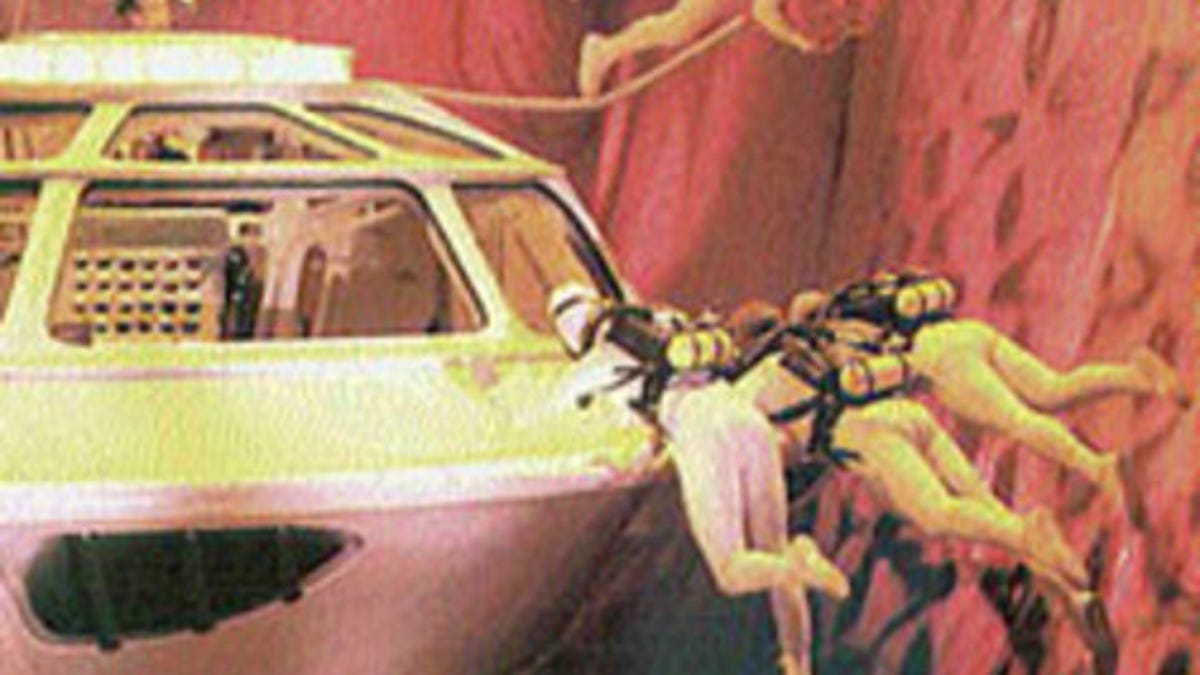Fantastic voyage or why the miniaturization of matter matters to marketing
In the attention-saturated, atomized markets of today, audiences recognize messages and events only within the blink of an eye and on a miniature scale.
The miniaturization of matter has long been a human desire, and viewing the world from a smaller perspective is the core of many novels and movies. The idea of shrinking people for the purpose of traveling inside another human's body, in particular, has been frequently used in animated cartoons, including The Simpsons, Futurama, Beetlejuice, and SpongeBob SquarePants.
One of the most entertaining pieces in this genre is Fantastic Voyage, a science-fiction movie from 1966, which -- albeit not free of some severe logical flaws -- has lost none of its original appeal. Fantastic Voyage tells the story of a CIA-led group of agents and surgeons who attempt to save the life of a dying diplomat. The medical team gets on board a submarine that is miniaturized to one micrometer in length and then injected into the diplomat's body. The group has just one hour to repair the life-threatening clot; after that, the submarine will begin to revert to its normal size and become large enough for the diplomat's immune system to detect and attack.
Micro is the new macro
What does Fantastic Voyage have to do with marketing? A couple of things: First of all, in the movie, shrinking the matter (that is, the submarine and its passengers) is the only way to reach objects that occur on an entirely different scale. The same is very much true for today's marketing: In the attention-saturated, atomized markets of today, audiences recognize messages and events only within the blink of an eye and on a miniature scale. They happen for nanoseconds in the always-on presence of today's perception apparatus but they rarely have staying power. It is not the billboard we're seeing; it is the ad embedded in the news feed on Facebook. It is not the TV commercial we're recalling; it is the intimate party conversation. But the clots that pollute consumers' ability to pay attention are so small that we have to down-scale our marketing programs if we want to remove them and reach the audience. "Scaling a campaign" has taken on the opposite meaning: it now means down-sizing messages and the way they are communicated. Think of the influential bloggers whom you want to have evangelize your brand. Identifying and engaging them is like finding the needle in the haystack, and you can't find that from the bird's eye perspective. Moreover, in a second parallel to the movie, the "window of opportunity" is smaller. Because of shrinking attention-spans, the slots for marketers to grab attention are shrinking as well -- you need to get the submarine out before it will revert to its original size.
Marketing 0.1
This effect suggests a very different time horizon for marketers. Rather than planning and conducting long-term campaigns aimed at rubbing in a consistent message through prominence and repetition, marketers need to stay above the fray (or below the fray) by consistently varying their message and diversifying their communication channels. Rather than relying on one major focused traditional above-the-line program, they need to employ a combination of different tactics below-the-line. I call this new model "marketing 0.1" (as opposed to marketing 101), and the charts below may help illustrate the contrast:
The only marketing program that matters: Identify the micro-verses of your multiple audiences, track their constant evolution, and provide content (information and entertainment) that is relevant at a specific point in time, for a specific person, in a specific context. Other than that, it's all tactics and only little strategy. Change your marketing mix every week, every day, every hour -- and your voyage through the customer universe will be fantastic.
